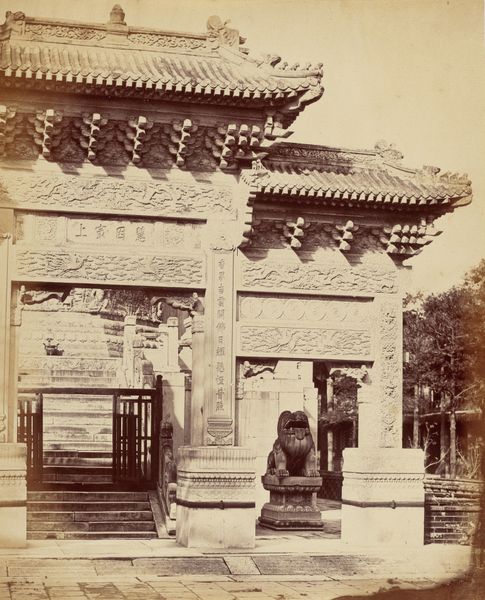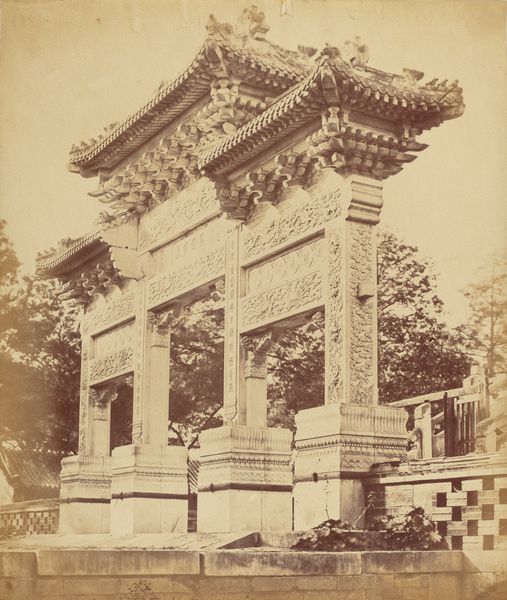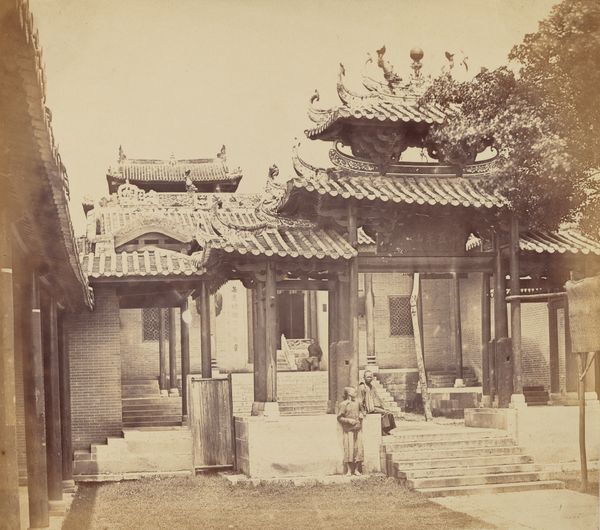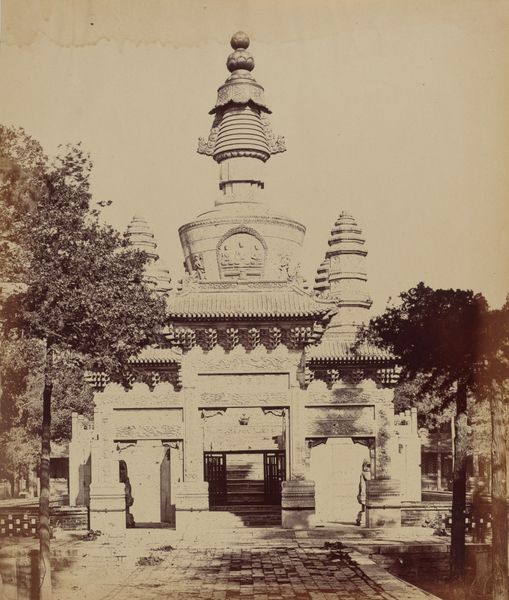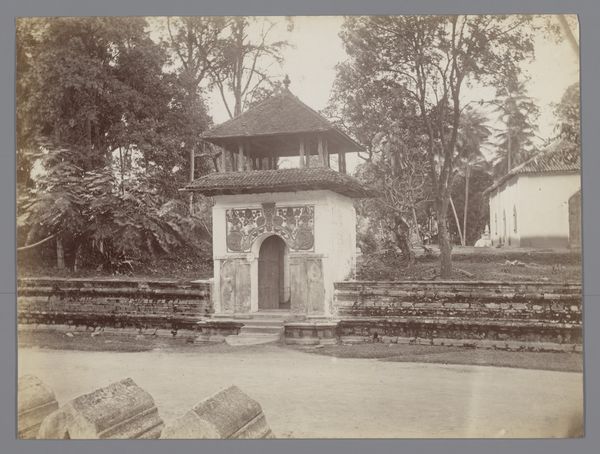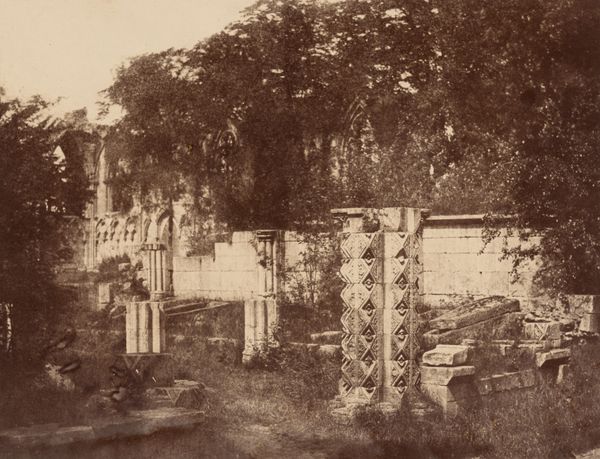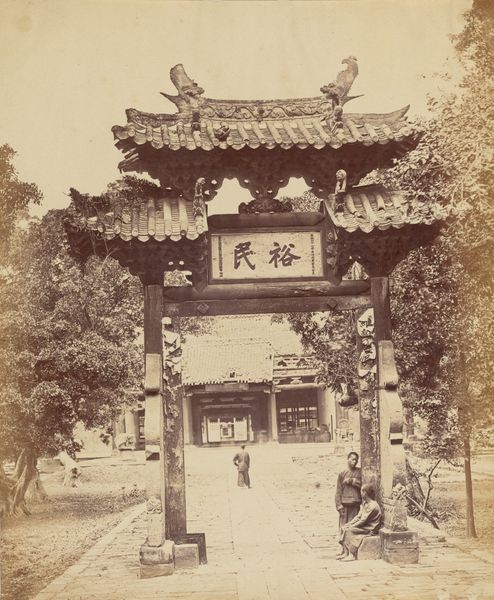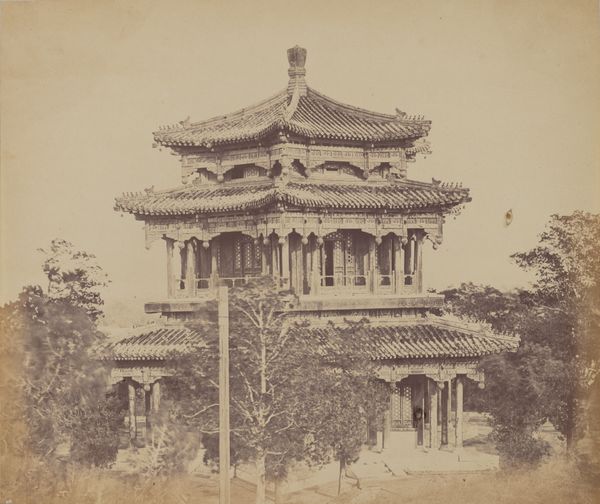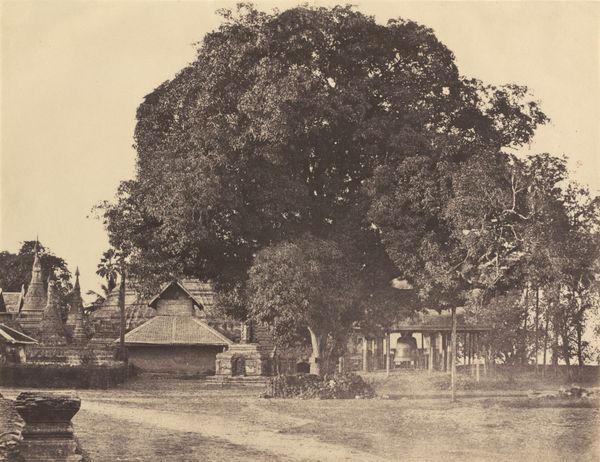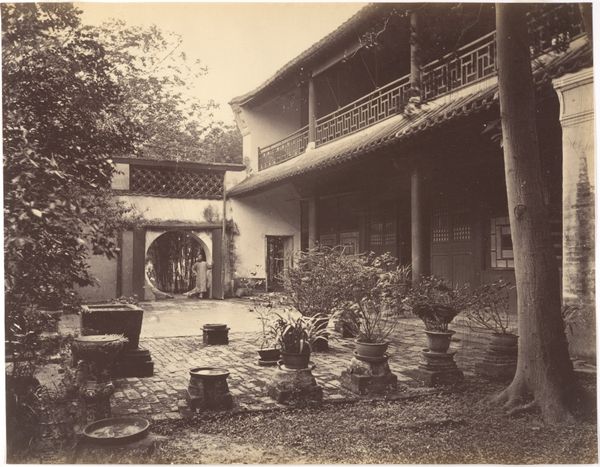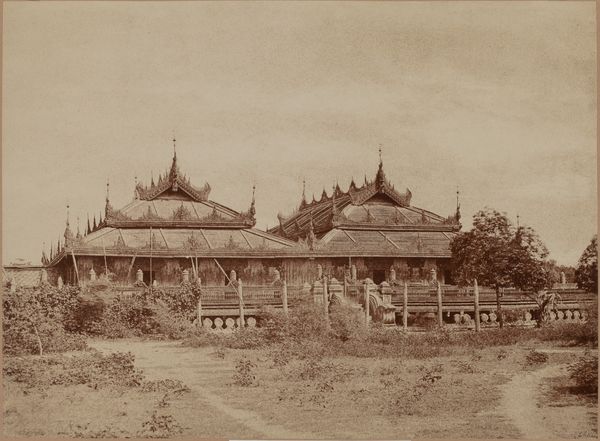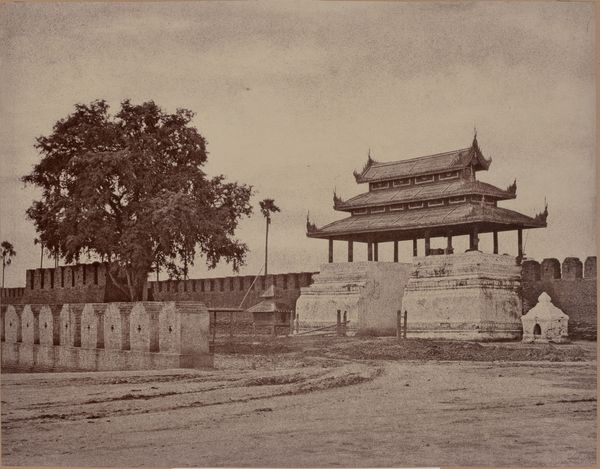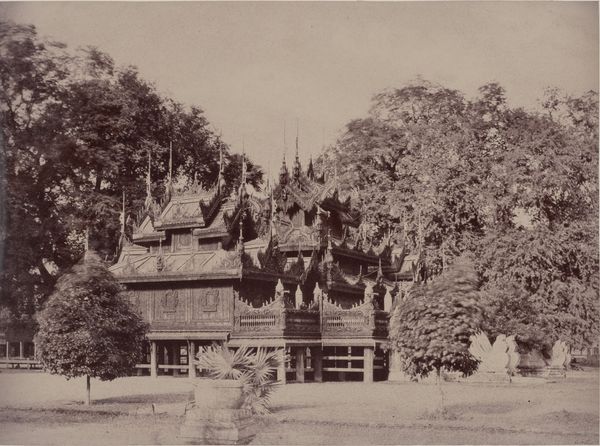
print, photography, gelatin-silver-print
# print
#
asian-art
#
landscape
#
photography
#
orientalism
#
gelatin-silver-print
#
19th century
Dimensions: image: 24.2 × 29.2 cm (9 1/2 × 11 1/2 in.) mount: 25.1 × 31.9 cm (9 7/8 × 12 9/16 in.)
Copyright: National Gallery of Art: CC0 1.0
Felice Beato took this albumen silver print in October 1860, depicting the exterior of a tomb depot near Peking. This image, beyond its immediate subject, offers insight into the fraught dynamics of 19th-century imperialism. Consider the Second Opium War, which had just concluded when Beato captured this scene. Western powers, including Britain and France, had invaded China, leading to the destruction of the Old Summer Palace, and the desecration of cultural and religious sites. Beato, as a war photographer, was embedded within this power structure. The photograph itself becomes a document of conquest, framing Chinese architecture and culture through a Western lens. How might the act of photographing, documenting, and ultimately possessing these images contribute to the power dynamics of the time? To fully grasp the photograph's implications, archival research into Beato's commissions, travel routes, and the historical context of Anglo-Chinese relations is essential. By acknowledging the politics of imagery, we gain a deeper understanding of art's role in shaping our perceptions of history and culture.
Comments
No comments
Be the first to comment and join the conversation on the ultimate creative platform.
